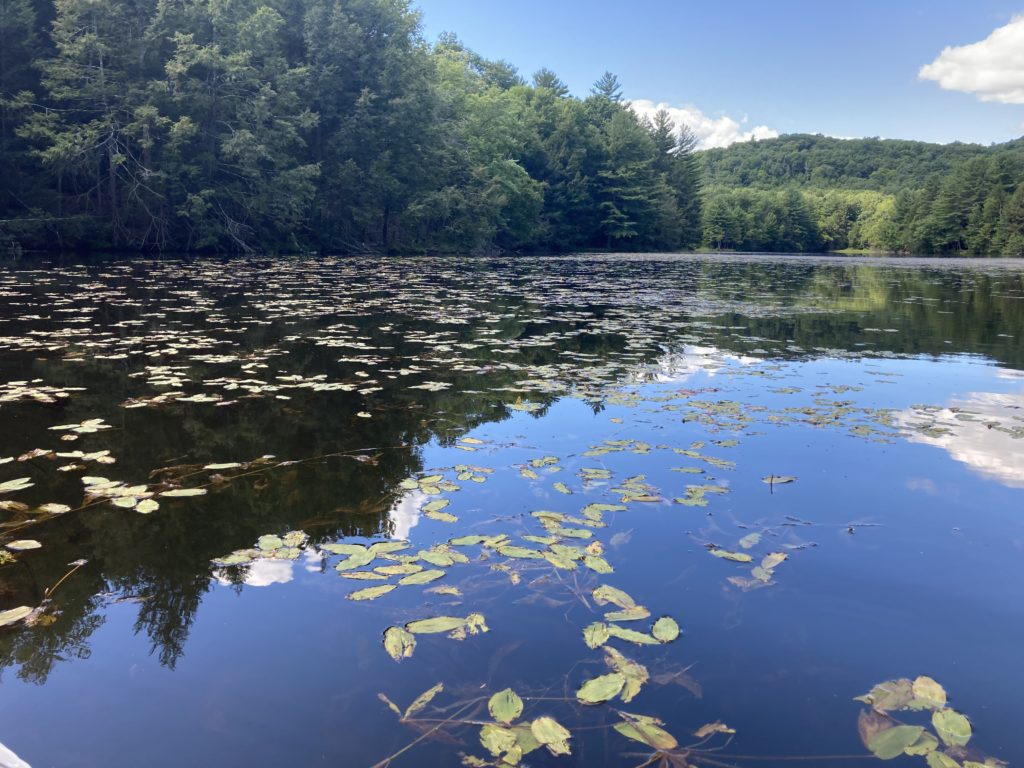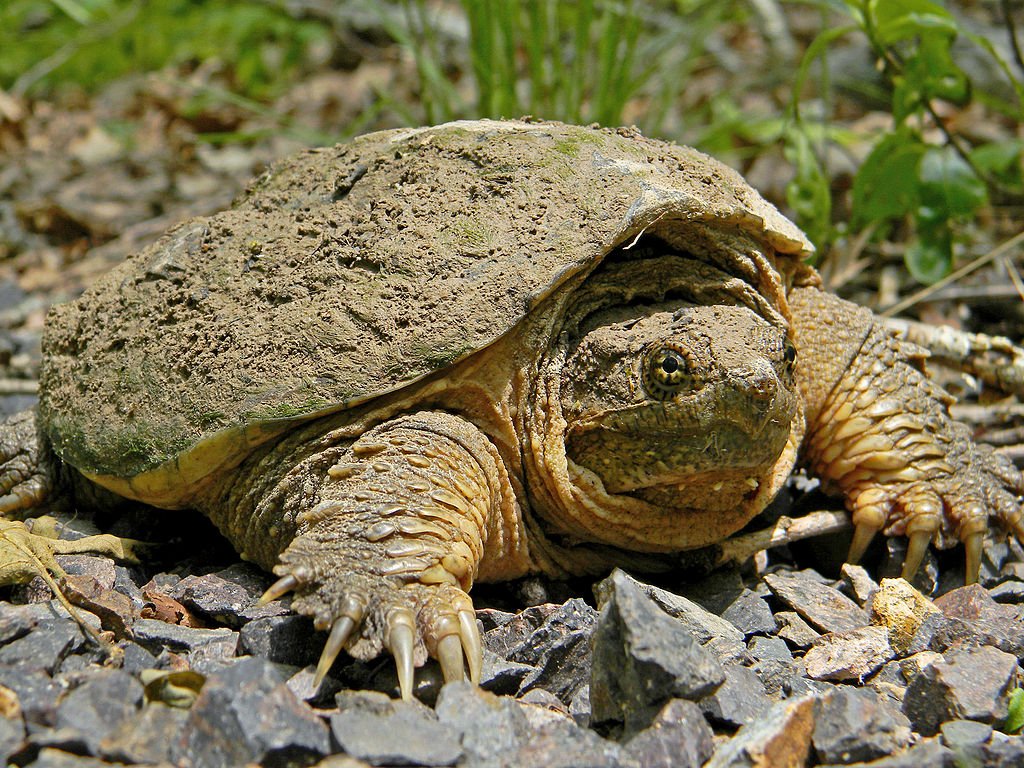Almanac: Snapper

This is a picture of a large snapping turtle hiding under aquatic vegetation in Lithia Springs Reservoir. Photo: Stephen Braun
Recently I was paddling slowly under a hot sun at the shallow eastern end of Lithia Springs Reservoir on the south side of the Holyoke range when I saw a large head sticking out of the water about 10 feet away. I don’t mean an otter-sized head or a beaver-sized head—smaller than those—but a way-bigger-than-a-standard-issue-turtle-sized head. Even from that distance I could feel it watching me, and after only about 10 seconds, it submerged. In doing so, however, it showed its heavily plated carapace and, as it dove, a glimpse of the pale yellow plastron, the bottom part of its shell.
It looked to be more than a foot long, with a scowling, blockish head, snorkel-like nose, and body propelled by wide, clawed feet. All of these features added up to only one thing: snapping turtle. These are, by far, the largest of our New England turtles. They are a hugely successful species, surviving almost unchanged for roughly 90 million years. They were contemporaries of the dinosaurs but avoided their fate. Snappers can live up to 40 years in the wild and do not stop growing (albeit the growth is very slow). The shell of a typical adult is between 8 and 14 inches long, although specimens at large as 19 inches long and weighing 75 pounds have been found.

I find snapping turtles both fascinating and frightening. If I’m swimming in a pond and happen to see one down on the bottom, I am strongly tempted to beat a hasty retreat, even though the logical part of my brain knows that these creatures are actually very shy and want to avoid me as much as I want to avoid them.
This avoidant behavior on the part snappers proved to be the case during my recent encounter. The day was warm and very still, so the water surface was perfectly smooth. Knowing that the snapper was holding its breath, I figured it had to emerge before too long. I learned later that they can actually hold their breath for 20-30 minutes, but the one I was observing poked its head up again after only about 5 minutes. This time it was a little farther away, and as soon as it caught sight of me, it submerged again.
I took a single stroke, to drift forward very slowly. The water was clear and I was hoping it would accidentally swim under my kayak. No such luck. It was clearly far too perceptive to be oblivious to something so foreign, and far too antisocial to want to investigate out of curiosity.
The most common time to see snappers is in late spring or early summer, when females head overland looking for well-drained soil in which to lay their ping-pong-ball-like eggs. These treks are often hazardous, given the number of roads around here. I once saw a snapper trying to cross Rt. 63 as I was heading up to Montague. Not knowing, at the time, how to effectively move these critters, I found a stick and shoved it very inelegantly to the side of the road and then into the nearby vegetation. It did not appreciate my gallantry at all, living up to its name by snapping at the stick to no avail. It’s quite possible that after I left the creature it turned right around and headed back into traffic, but I did what I could.
Turns out that although you do need to be careful when handling snapping turtles—they do have a powerful bite, a long flexible neck, and extremely sharp claws—you can do so safely by grabbing the carapace from behind, about two-thirds of the way back from the head. Thus grasped, you can drag it away from danger, or, preferably, onto a mat (car floor mats work well) and then drag the mat, thus avoiding damaging the turtle’s plastron. This is definitely a case of a picture being worth a thousand words, so if you’re interested, check out this short tutorial about helping snappers cross a road.
After some more cat-and-mouse with my shy turtle friend, I decided to leave it in peace. The turtle had its life to lead, and I, mine. Who knows what it thought about its encounter with me, but as I explored the rest of that small, but lovely, body of water, I couldn’t stop wondering what the world looks like filtered through the mind of a turtle.
Almanac is a regular Indy column of observations, musings, and occasional harangues related to the woods, waters, mountains, and skies of the Pioneer Valley. Please feel free to comment on posts and add your own experiences or observations.

1 thought on “Almanac: Snapper”